

基于FreeRTOS+LVGL V8智能家居仪表盘设计
描述
用野火启明6M5开发板制作了一个基于FreeRTOS和LVGL V8的智能家居仪表盘,颜值较高,也可以作为桌面摆件使用,具体特点如下:
采用SPI+DTC驱动1.8寸SPI屏幕,超高帧率刷屏
采用LVGL V8界面库绘制界面,有丰富控件、动画(FPS稳定50以上!)
采用ESP8266联网,使用心知天气API获取当前天气并显示到屏幕
采用ESP8266联网,通过MQTT协议连接到云服务器,上传状态数据
采用鲁班猫2安装EMQ作为MQTT服务器,接收启明6M5上传数据
采用Node-RED + Homeassistant接入家庭自动化,与智能家居设备完美联动
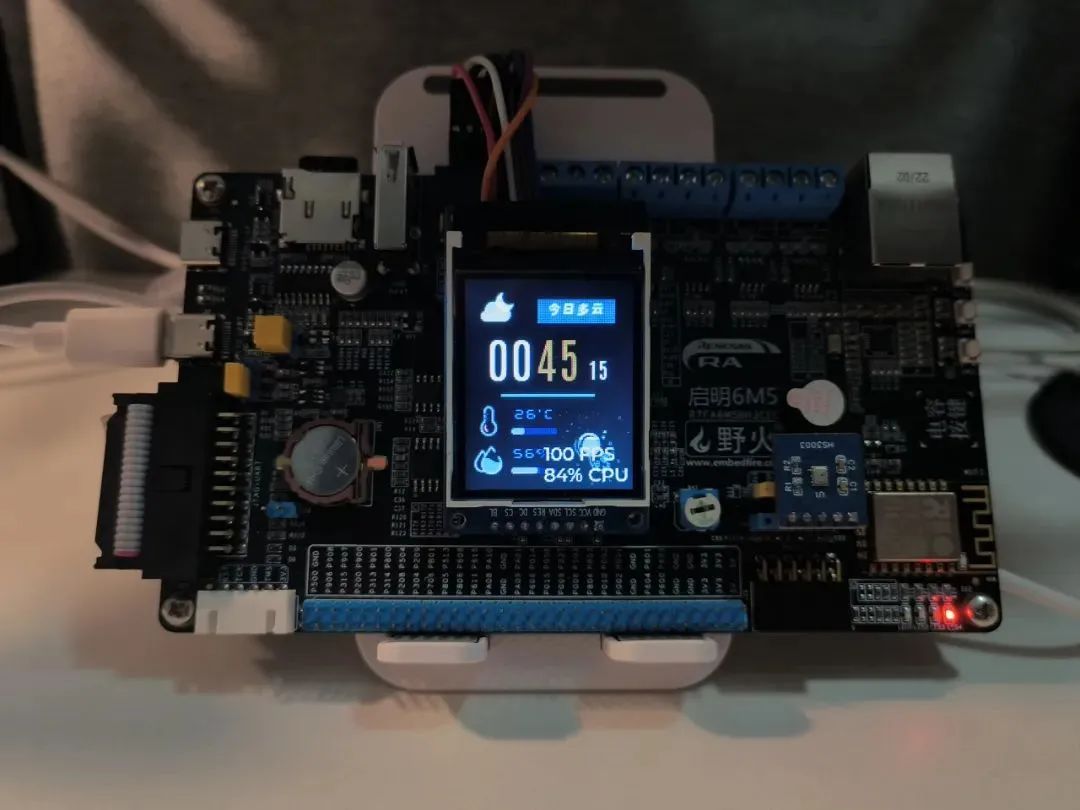
01
硬件平台介绍
野火启明6M5开发板
使用野火启明6M5开发板来进行开发,开发板采用R7FA6M5BH3CFC作为主控芯片,有2MB Flash,2MB!!拿来开发GUI时的可发挥空间很大,接口有SD卡、以太网、PMOD、USB等等,接口很丰富,功能模块有ESP8266、电容按键和实体按键等,功能十分的丰富。
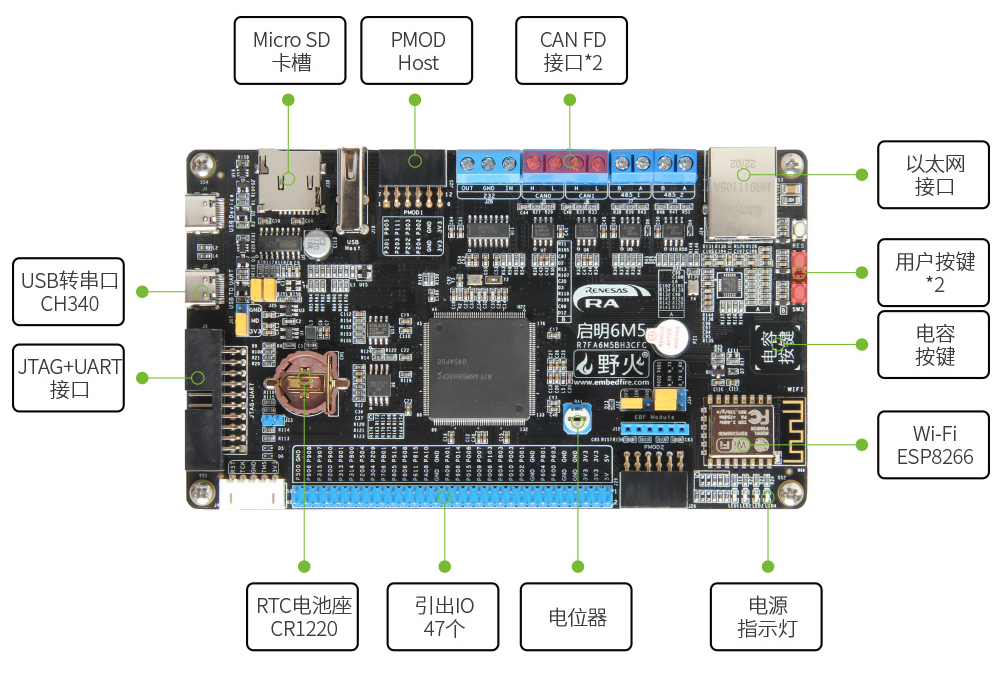
外接模块
由于开发板板载的模块已经十分丰富,这里只外接了一个SPI屏幕和温湿度传感器模块
采用1.8寸的液晶显示屏,驱动芯片为ST7735S,SPI接口。
温湿度传感器采用瑞萨的HS3003温湿度传感器,I2C接口。
外设使用情况
本次使用到了许多的外设,其中有如下外设
串口4 (SCI_UART4) 作为调试串口使用
串口9 (SCI_UART9) 连接到ESP8266-AT模块
SDHI连接到SD卡,提供文件系统的支持
AGT定时器为LVGL提供计时器
RTC提供实时的时间 (需要安装CR1220电池)
SPI+DTC来实现屏幕的驱动,SPI以最大速度50MHz运行
TOUCH提供电容按键
I2C (SCI_I2C6) 连接到HS3003温湿度传感器

02
软件设计方案
① 采用FreeRTOS作为本作品使用的RTOS
② 采用LVGL V8界面库来进行界面开发
③ 采用letter-shell终端组件方便开发调试
④ 采用easylogger日志组件方便调试
⑤ 采用cJSON组件配合来完成网络数据包打包与解包
多线程
由于代码较多,所以不作全面的介绍,只介绍几个线程的任务内容和软件包的使用,文末有开源链接,作品的代码全部开源,线程列表如下图,下面依次介绍。
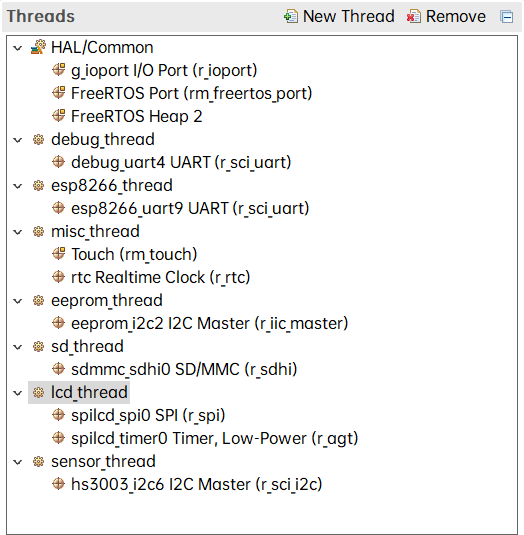
调试线程(debug_thread)
该线程使用了letter-shell和easylogger软件包,提供完整的终端操作支持,同时支持日志打印,例如打印esp8266线程的调试日志。
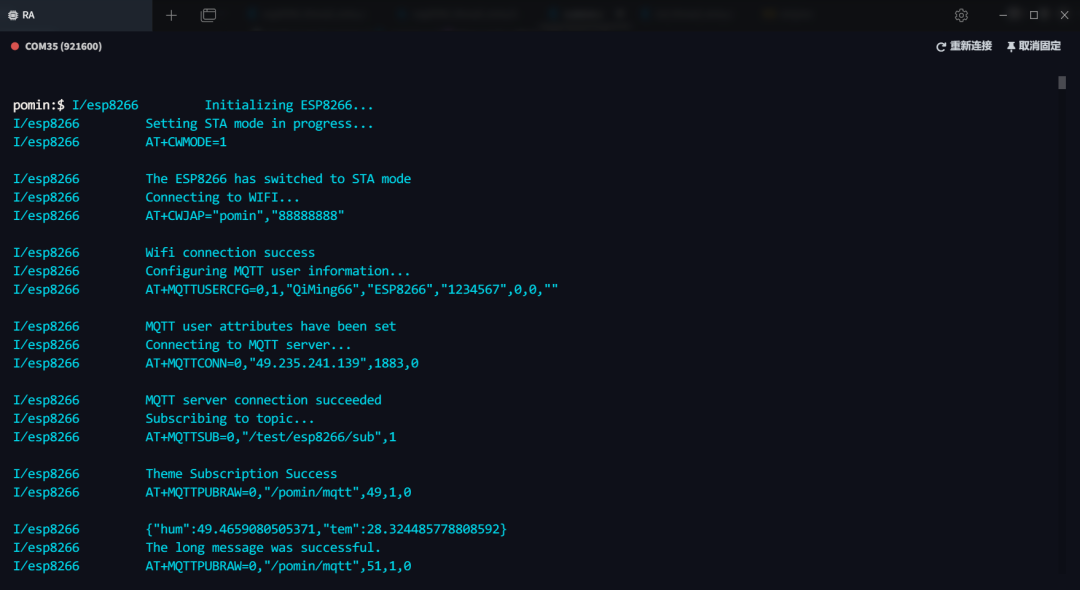
使用自定义的命令来打印当前运行的任务列表
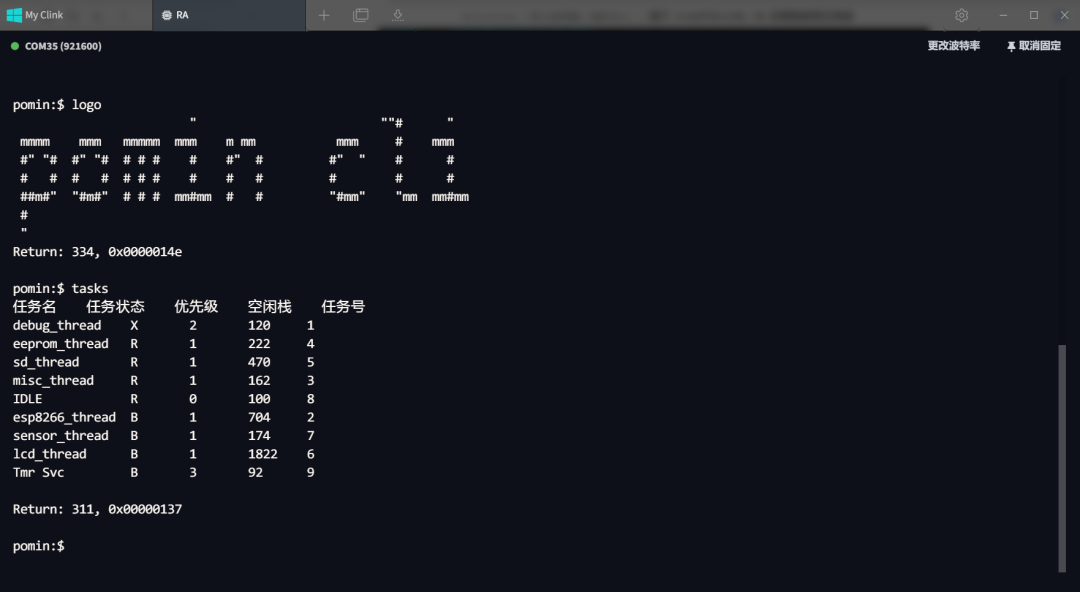
ESP8266线程(esp8266_thread)
该线程使用AT指令,实现开机自动连接Wi-Fi、自动连接MQTT服务器、订阅主题。当收到消息队列的数据后,更新温湿度数据、LED状态,然后使用cJSON来打包为JSON数据包,发布到MQTT服务器的指定主题。当收到MQTT发来的数据后,使用cJSON来解析JSON数据包,更新当前天气等。
(触摸)按键、LED、RTC线程(misc_thread)
该线程使用了MultiButton软件包,可以实现一个按键的单击、双击、连击、长按等事件的处理,这里使用触摸按键来搭配这个软件包实现触摸按键控制板载的LED亮灭,并且发送状态信息到消息队列中,交由ESP8266线程上传到服务器端。
该线程同时也使用了RTC时钟,每秒触发一次中断,发送当前时间到消息队列中,交由LCD线程来显示当前时间。
SD卡线程
该线程使用了Fatfs来挂载文件系统,自动将SD卡挂载到1: 分区下,提供给LVGL FS接口,实现LVGL加载SD卡中的文本、图片等文件。
屏幕驱动线程(lcd_thread)
屏幕驱动使用硬件SPI+DTC的方案,这里没有使用SCI上的SPI接口,因为根据瑞萨6M5的文档得知挂在SCI上的SPI最大时钟频率为25Mhz,而直接连接的SPI最大时钟频率为50Mhz,显然使用直连SPI接口可以获得更快的刷屏速度。
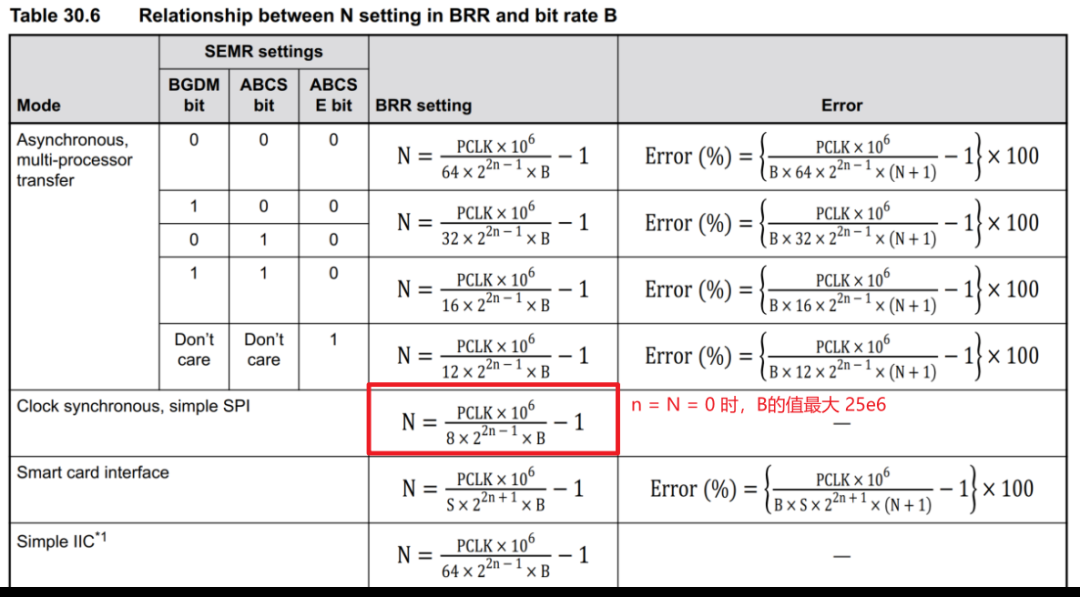

该线程会接收多个线程传入的消息队列:接收RTC时钟中断发来的消息队列,在LVGL中注册的timer callback函数中读取后显示到屏幕上,每秒刷新一次时间数据;接收温湿度线程发来的消息队列,读取后更新当前屏幕上的温湿度数值和进度条控件。
温湿度传感器线程(sensor_thread)
该线程每隔十秒使用硬件I2C来读取HS3003的数据并解算出温湿度数据,发送温湿度数据到消息队列中,交由ESP8266线程来上传到服务器和LCD线程来显示到屏幕。
LVGL移植、界面设计LVGL移植
在本作品中对LVGL的显示接口和文件系统接口做了移植,下面对LVGL的显示接口移植做介绍,LVGL的显示接口只有三个函数需要修改,分别是缓冲区的初始化、屏幕的初始化和刷屏函数的接口,对于屏幕的初始化在lcd_thread中已经完成过,所以只需完成缓冲区的初始化和刷屏函数接口的适配。
为了实现更快的刷屏速度,使用官方提供的example2程序,并且给LVGL申请一个全屏缓冲区,搭配SPI+DTC的全屏缓冲区,需要更新屏幕上的数据时只需要搬运数据即可。
上下滑动查看完整内容
左右滑动即可查看完整代码
#if 1 /********************* * INCLUDES *********************/ #include "lv_port_disp.h" #include/********************* * DEFINES *********************/ #ifndef MY_DISP_HOR_RES #warning Please define or replace the macro MY_DISP_HOR_RES with the actual screen width, default value 320 is used for now. #define MY_DISP_HOR_RES 128 #endif #ifndef MY_DISP_VER_RES #warning Please define or replace the macro MY_DISP_HOR_RES with the actual screen height, default value 240 is used for now. #define MY_DISP_VER_RES 160 #endif /********************** * TYPEDEFS **********************/ /********************** * STATIC PROTOTYPES **********************/ static void disp_init(void); static void disp_flush(lv_disp_drv_t * disp_drv, const lv_area_t * area, lv_color_t * color_p); /********************** * STATIC VARIABLES **********************/ /********************** * MACROS **********************/ /********************** * GLOBAL FUNCTIONS **********************/ void lv_port_disp_init(void) { /*------------------------- * Initialize your display * -----------------------*/ disp_init(); /*----------------------------- * Create a buffer for drawing *----------------------------*/ /* Example for 2) */ static lv_disp_draw_buf_t draw_buf_dsc_2; static lv_color_t buf_2_1[MY_DISP_HOR_RES * MY_DISP_VER_RES]; lv_disp_draw_buf_init(&draw_buf_dsc_2, buf_2_1, NULL, MY_DISP_HOR_RES * MY_DISP_VER_RES); /*Initialize the display buffer*/ /*----------------------------------- * Register the display in LVGL *----------------------------------*/ static lv_disp_drv_t disp_drv; /*Descriptor of a display driver*/ lv_disp_drv_init(&disp_drv); /*Basic initialization*/ /*Set up the functions to access to your display*/ /*Set the resolution of the display*/ disp_drv.hor_res = MY_DISP_HOR_RES; disp_drv.ver_res = MY_DISP_VER_RES; /*Used to copy the buffer's content to the display*/ disp_drv.flush_cb = disp_flush; /*Set a display buffer*/ disp_drv.draw_buf = &draw_buf_dsc_2; /*Required for Example 3)*/ //disp_drv.full_refresh = 1; /* Fill a memory array with a color if you have GPU. * Note that, in lv_conf.h you can enable GPUs that has built-in support in LVGL. * But if you have a different GPU you can use with this callback.*/ //disp_drv.gpu_fill_cb = gpu_fill; /*Finally register the driver*/ lv_disp_drv_register(&disp_drv); } /********************** * STATIC FUNCTIONS **********************/ /*Initialize your display and the required peripherals.*/ static void disp_init(void) { /*You code here*/ } volatile bool disp_flush_enabled = true; /* Enable updating the screen (the flushing process) when disp_flush() is called by LVGL */ void disp_enable_update(void) { disp_flush_enabled = true; } /* Disable updating the screen (the flushing process) when disp_flush() is called by LVGL */ void disp_disable_update(void) { disp_flush_enabled = false; } /*Flush the content of the internal buffer the specific area on the display *You can use DMA or any hardware acceleration to do this operation in the background but *'lv_disp_flush_ready()' has to be called when finished.*/ extern uint8_t lcd_buff[160][128][2]; static void disp_flush(lv_disp_drv_t * disp_drv, const lv_area_t * area, lv_color_t * color_p) { if(disp_flush_enabled) { /*The most simple case (but also the slowest) to put all pixels to the screen one-by-one*/ int32_t x; int32_t y; for(y = area->y1; y <= area->y2; y++) { for(x = area->x1; x <= area->x2; x++) { /*Put a pixel to the display. For example:*/ /*put_px(x, y, *color_p)*/ lcd_buff[y][x][0] = color_p->full >> 8; lcd_buff[y][x][1] = color_p->full; color_p++; } } } /*IMPORTANT!!! *Inform the graphics library that you are ready with the flushing*/ lv_disp_flush_ready(disp_drv); } #else /*Enable this file at the top*/ /*This dummy typedef exists purely to silence -Wpedantic.*/ typedef int keep_pedantic_happy; #endif
对于刷屏函数的移植只需实现数据的搬运,代码如下:
extern uint8_t lcd_buff[160][128][2];
static void disp_flush(lv_disp_drv_t * disp_drv, const lv_area_t * area, lv_color_t * color_p)
{
if(disp_flush_enabled) {
/*The most simple case (but also the slowest) to put all pixels to the screen one-by-one*/
int32_t x;
int32_t y;
for(y = area->y1; y <= area->y2; y++) {
for(x = area->x1; x <= area->x2; x++) {
/*Put a pixel to the display. For example:*/
/*put_px(x, y, *color_p)*/
lcd_buff[y][x][0] = color_p->full >> 8;
lcd_buff[y][x][1] = color_p->full;
color_p++;
}
}
}
/*IMPORTANT!!!
*Inform the graphics library that you are ready with the flushing*/
lv_disp_flush_ready(disp_drv);
}
在lcd_thread线程的while循环中只需使用SPI发送全屏缓冲到屏幕,代码如下:
void lcd_push_buff(void) {
R_SPI_Write(spilcd_spi0.p_ctrl, lcd_buff, LCD_W * LCD_H * 2, SPI_BIT_WIDTH_8_BITS);
}
/* 下面是主函数调用 */
void lcd_thread_entry(void* pvParameters) {
FSP_PARAMETER_NOT_USED(pvParameters);
lcd_setup();
while (1) {
lcd_push_buff();
lv_task_handler();
}
}
界面设计与仿真
采用NXP的GUI Guider作为PC端的设计器和仿真器,GUI Guider可以在PC端完成一站式的LVGL界面设计与仿真,例如下图所示:
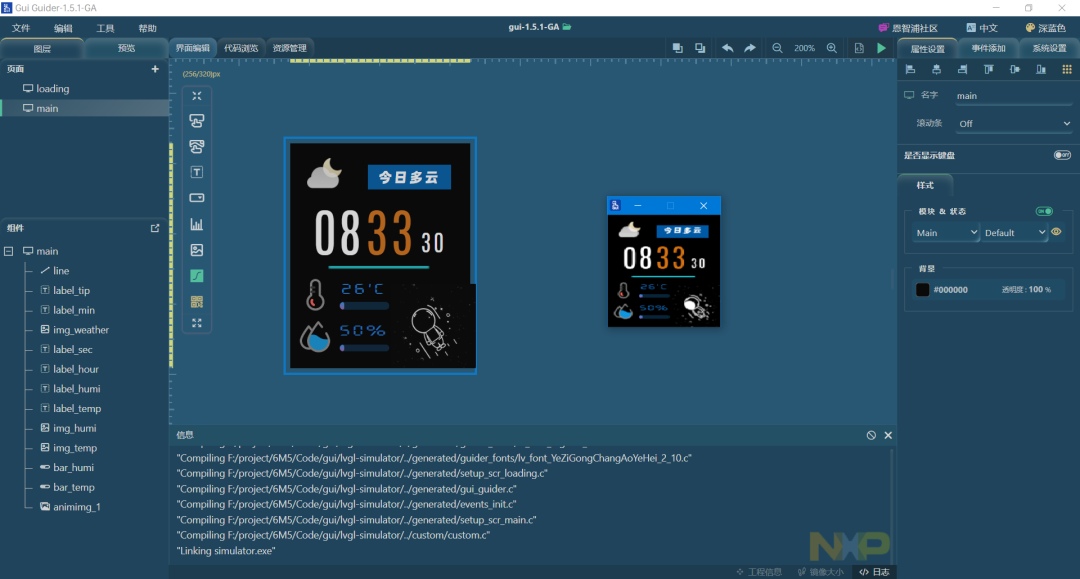
在GUI Guider中对两个页面分别创建了一个定时器,并且实现了两个回调函数,代码如下,通过这个定时器回调函数来实现周期性的刷新屏幕显示的内容,更新网络连接状态、当前温湿度、当前时间、当前天气等数据。
左右滑动即可查看完整代码
void timer_main_reflash_cb(lv_timer_t *t)
{
static uint32_t tick;
lv_ui * gui = t->user_data;
#ifdef __ARMCC_VERSION
float sensor_info[2];
if (pdTRUE == xQueueReceive(g_sensor2lcd_queue, sensor_info, pdMS_TO_TICKS(0))) {
lv_bar_set_value(gui->main_bar_humi, (uint32_t) sensor_info[0], LV_ANIM_ON);
lv_bar_set_value(gui->main_bar_temp, (uint32_t) sensor_info[1], LV_ANIM_ON);
lv_label_set_text_fmt(gui->main_label_humi, "%2d%%", (uint32_t) sensor_info[0]);
lv_label_set_text_fmt(gui->main_label_temp, "%2d'C", (uint32_t) sensor_info[1]);
}
rtc_time_t get_time;
if (pdTRUE == xQueueReceive(g_clock2lcd_queue, &get_time, pdMS_TO_TICKS(0))) {
lv_label_set_text_fmt(gui->main_label_hour, "%02d", get_time.tm_hour);
lv_label_set_text_fmt(gui->main_label_min, "%02d", get_time.tm_min);
lv_label_set_text_fmt(gui->main_label_sec, "%02d", get_time.tm_sec);
}
uint32_t num = 0;
if (pdTRUE == xQueueReceive(g_esp2lcd_queue, &num, pdMS_TO_TICKS(0))) {
if (num > 38) {
num = 99;
}
char path [30];
sprintf(path, "1lvgl/weather/%d.jpg", num);
lv_img_set_src(gui->main_img_weather, path);
}
#endif
}
const char str_ch[][40] = {
"连接WI-Fi...",
"连接WI-Fi失败!",
"连接WI-Fi成功!",
"连接MQTT服务器...",
"连接MQTT服务器失败",
"订阅MQTT主题...",
};
void timer_loading_reflash_cb(lv_timer_t *t)
{
static uint32_t num = 0;
lv_ui * gui = t->user_data;
#ifdef __ARMCC_VERSION
if (pdTRUE == xQueueReceive(g_esp2lcd_queue, &num, pdMS_TO_TICKS(0))) {
lv_label_set_text(gui->loading_tip, str_ch[num]);
lv_bar_set_value(gui->loading_process, num * 20, LV_ANIM_ON);
if (num >= 5) {
setup_scr_main(gui);
lv_scr_load(gui->main);
}
}
#else
num += 3;
lv_label_set_text(gui->loading_tip, str_ch[num / 20]);
lv_bar_set_value(gui->loading_process, num, LV_ANIM_ON);
if (num >= 100) {
setup_scr_main(gui);
lv_scr_load(gui->main);
}
#endif
}
MQTT与服务器解析
使用ESP8266模块连接到MQTT服务器,因为MQTT也是自建的EMQX服务器,自由度相对onenet平台要大很多,这里的上传数据、下载数据都是统一由MQTT服务器搭配node-red来完成,避免来回地将ESP8266切换为透传模式来实现HTTP访问,全由服务器来进行数据的处理与打包,拖拽化开发自定义的MQTT消息处理流程不香吗?
例如上传当前温湿度、LED状态、知心天气API获得当前的天气数据的流程设置如下:
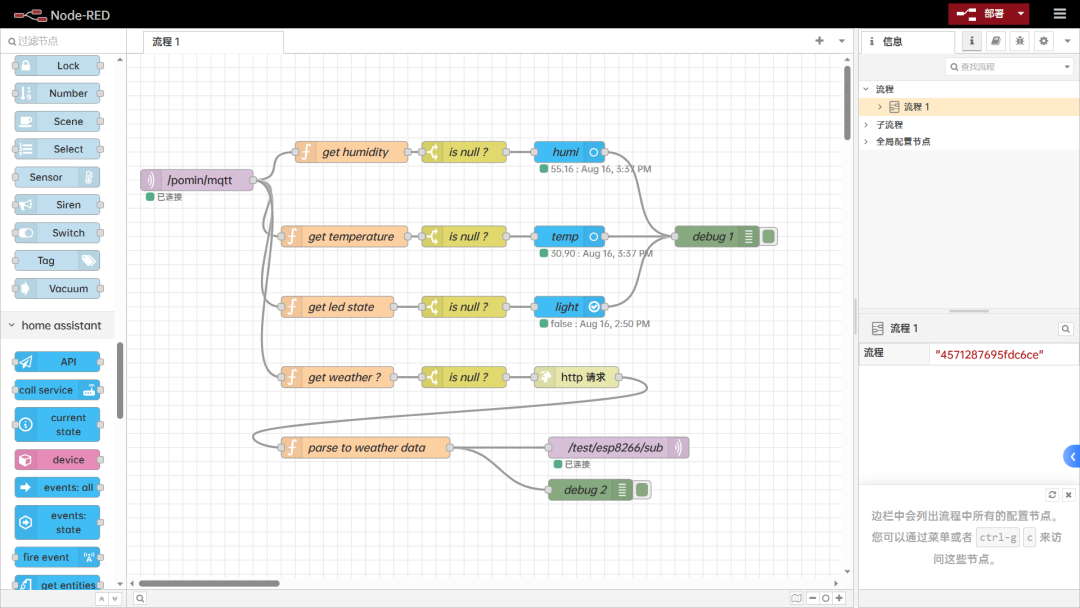
服务器端解析温湿度数据时,上传的数据包格式为 JSON 数据,形如
{“hum”:51.498504638671872,”tem”:30.258193969726564}
为了解析MQTT的数据包,需要编写一段代码来实现数据类型的限定,这里还加了保留到两位小数,其中的 “get humidity” 等函数只需编写如下一段JavaScript代码,经过解析后得到湿度数据,传入后面的 “is null ?” 节点后若不为空就更新数据给Homeassistant的设备。
var field = msg.payload.hum;
var out;
if (field == null) {
out = { payload: null };
} else {
if (typeof field === 'number') {
if (Number(field) === Math.round(field)) {
/* 整数 */
out = { payload: field };
} else {
/* 小数 */
out = { payload: field.toFixed(2) };
}
} else if (typeof field === 'boolean') {
/* 布尔 */
out = { payload: field };
} else if (typeof field === 'string') {
/* 字符串 */
out = { payload: field };
}
}
return out;
经过HTTP访问知心天气的API后,耶对得到的JSON结果进行解析,消息形如:
{
"results": [
{
"location": {
"id": "WTW3SJ5ZBJUY",
"name": "Shanghai",
"country": "CN",
"path": "Shanghai,Shanghai,China",
"timezone": "Asia/Shanghai",
"timezone_offset": "+08:00"
},
"now": {
"text": "Cloudy",
"code": "4",
"temperature": "35"
},
"last_update": "2023-08-13T1214+08:00"
}
]
}
解析代码也非常简单,text为当前的天气文本,code为当前的天气代码:
var text = msg.payload.results[0].now.text;
var code = msg.payload.results[0].now.code;
return { payload: code };
然后发送最终的天气码到主题 /test/esp8266/sub,这个主题是ESP8266已经订阅的,ESP8266线程完成数据的获取,然后发送天气码到消息队列,LCD读取消息队列,得到天气码,然后读取SD卡中的天气图标,显示到屏幕上,完成天气图标的更新。
03
最终效果
联网进度显示界面
开机自动联网、进度条提示,FPS最低50!这个瑞萨的MCU跑LVGL完全无压力
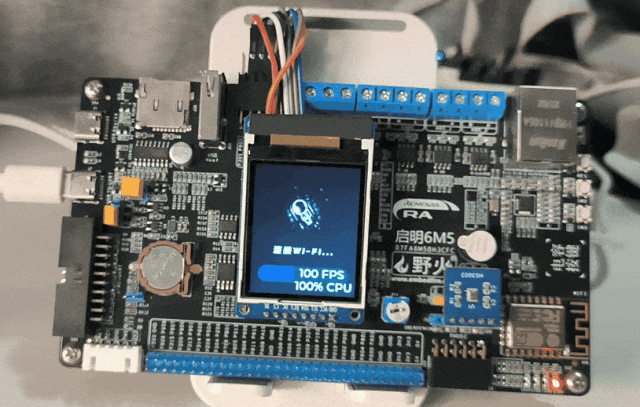
实时温湿度、时间数据显示
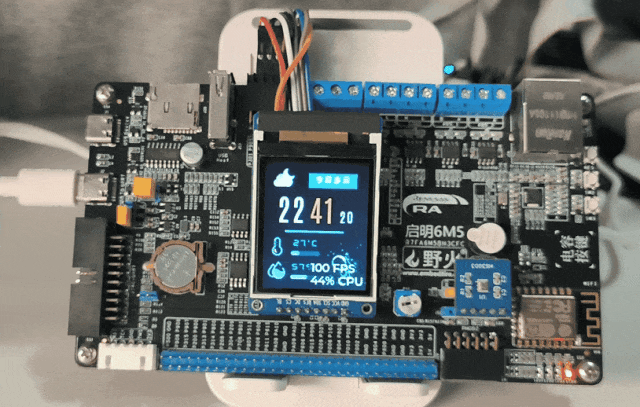
接入Homeassistant记录温湿度数据
通过node-red接入到HA作为一个设备显示当前的温湿度数据和板载LED的状态
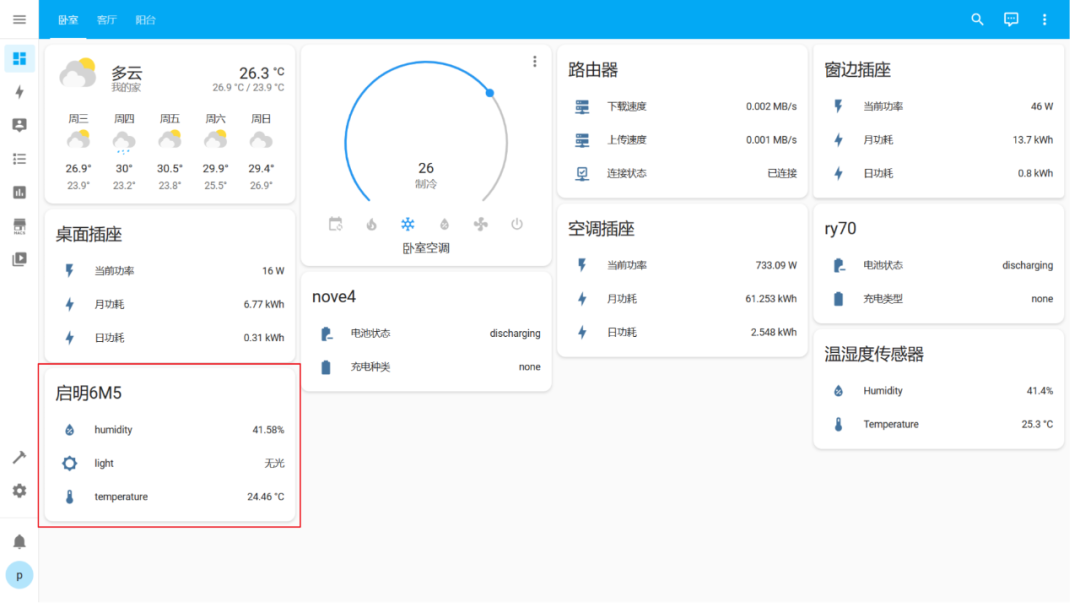
温度数据的历史曲线(开了空调温度是直线下降啊)
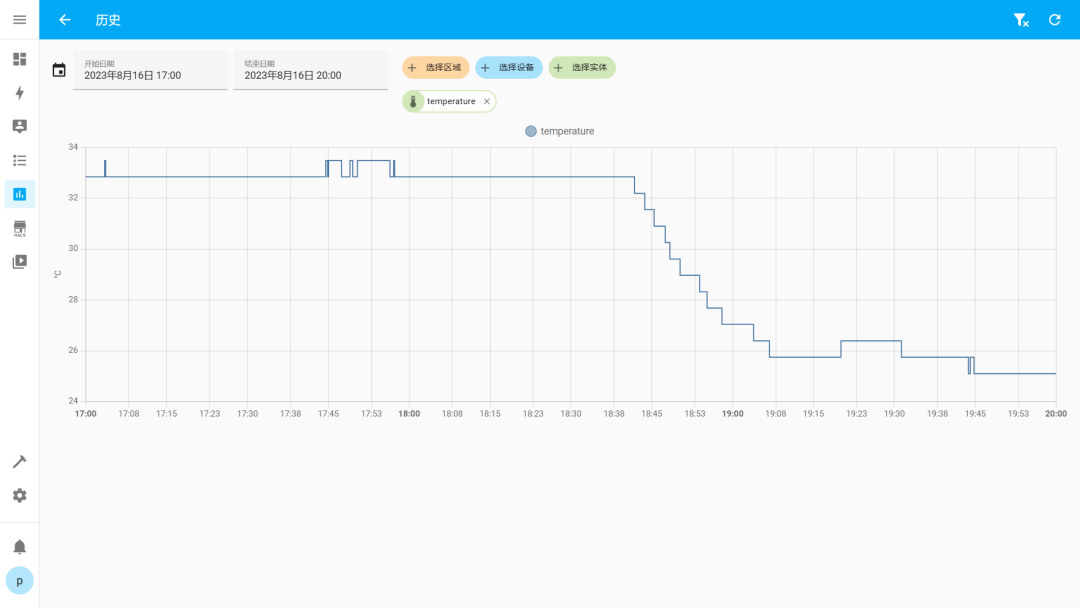
湿度数据的历史曲线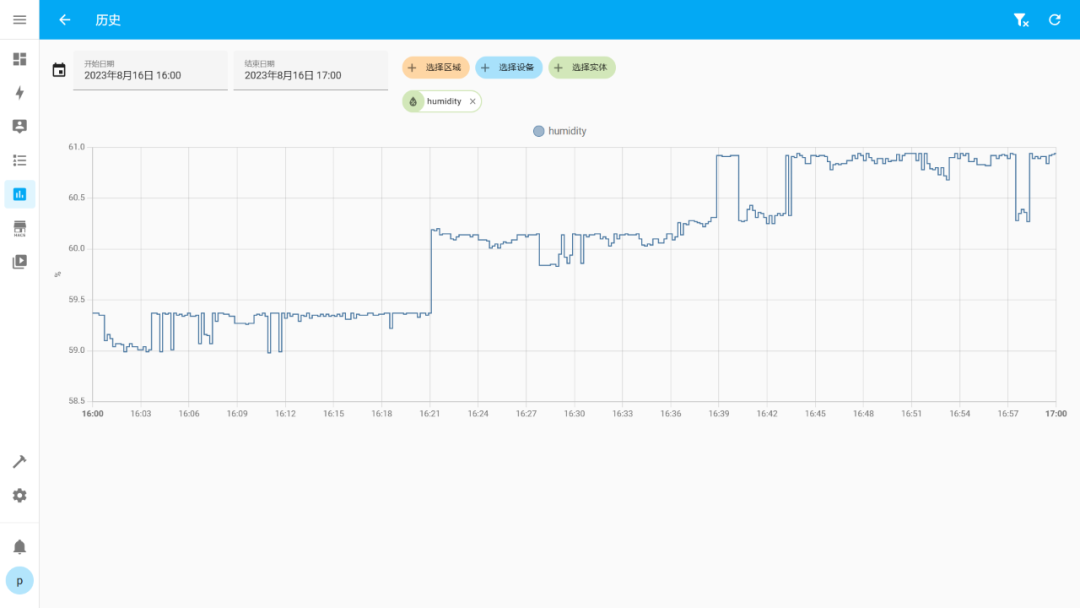
天猫精灵获取板载LED状态
设置了单击触摸按键开关LED2亮灭的逻辑操作,然后会自动上传这个LED2的开关状态到MQTT服务器上,通过node-red来上传到Homeassistent,搭配巴法云平台接入到语音助手,我用的是天猫精灵,可以通过语音助手获取到当前LED2的状态,当然只是做一个演示,可以实现的自动化智能家居当然还有很多的玩法。
04
视频展示
05
总结
本作品开发过程中体会到了瑞萨的开发软件十分的易用,方便,也学习到了LVGL V8、MQTT服务器数据包的收发,node-red桥接MQTT消息包到HA的知识。
完成以上所有的功能后Flash使用了1MB出头(主要是GUI的资源文件),这个单片机是有2MB的Flash,界面开发还有很大的发挥空间。
1.8寸的小屏比较小,可以换成更大的屏和增加触摸,但是RA6M5没有专门的屏幕驱动外设,如果要拓展成并口MCU屏或者RGB屏还是有点受限的。
使用到了如下第三方软件包,除FatFs使用BSD外别的均为MIT开源协议
CJSON
EasyLogger
FatFs
letter-shell
MultiButton
LVGL V8
FreeRTOS
审核编辑:刘清
-
原装IC网基于瑞萨单片机的仪表盘(总线型)解决方案2013-02-26 0
-
汽车仪表盘解决方案2014-01-07 0
-
虚拟仪表盘是未来的趋势吗?2014-09-25 0
-
OBD车速和仪表盘车速的对应?2015-03-03 0
-
基于labview汽车仪表盘的设计2015-06-01 0
-
汽车仪表盘MCU背后的故事2019-07-09 0
-
一文浅析汽车仪表盘2021-08-31 0
-
开发汽车obd数字仪表盘的过程记录2021-12-20 0
-
集成TPMS功能的仪表盘设计方案解析2017-11-20 926
-
集成TPMS功能的电动汽车仪表盘设计解析2017-11-21 1085
-
汽车仪表盘维修_汽车仪表盘可以修理吗_汽车仪表盘维修多少钱2018-01-11 63259
-
用于仪表盘的电源解决方案2018-08-20 3771
-
设计全液晶仪表盘的介绍2020-07-02 3649
-
克服汽车仪表盘电源设计难题2022-11-03 497
全部0条评论

快来发表一下你的评论吧 !

